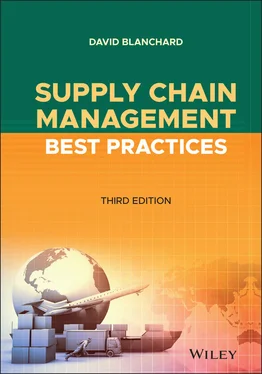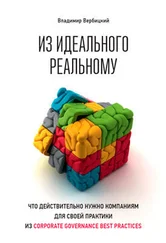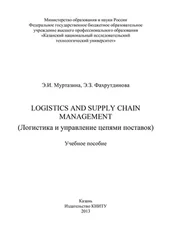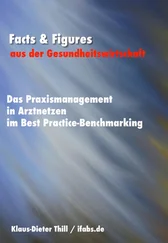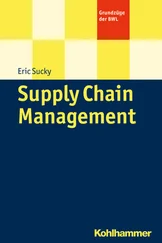7 Are short-term forecast deviations being monitored and adjusted, and is long-term forecast accuracy continuously improving?
8 Is your inventory accuracy consistently above 98%?
9 Are you able to avoid carrying excess safety stock buffers?
10 Are your excess and obsolete inventories being measured, and are they less than 1% of total inventory? 15
The best-known and most detailed supply chain performance metrics are encompassed in the Supply Chain Operations Reference (SCOR) model, which was created in 1995 and has been continuously refined ever since by APICS' Supply Chain Council. The SCOR model provides an industry-standard approach to analyze, design, and implement changes to improve performance throughout six integrated supply chain processes—plan, source, make, deliver, return, and enable—spanning the full gamut from a supplier's supplier to a customer's customer and every point in between. The SCOR model is aligned with a company's operational strategy, material, workflows, and information flows.
As explained by Peter Bolstorff and Robert Rosenbaum in Supply Chain Excellence , a handbook on using the SCOR model, the six SCOR processes encompass the following measurable activities:
1 Plan: Assess supply resources; aggregate and prioritize demand requirements; plan inventory for distribution, production, and material requirements; and plan rough-cut capacity for all products and all channels.
2 Source: Obtain, receive, inspect, hold, issue, and authorize payment for raw materials and purchased finished goods.
3 Make: Request and receive material; manufacture and test product; package, hold, and/or release product.
4 Deliver: Execute order management processes; generate quotations; configure product; create and maintain a customer database; maintain a product/price database; manage accounts receivable, credits, collections, and invoicing; execute warehouse processes, including pick, pack, and configure; create customer-specific packaging/labeling; consolidate orders; ship products; manage transportation processes and import/export; and verify performance.
5 Return: Defective, warranty, and excess return processing, including authorization, scheduling, inspection, transfer, warranty administration, receiving and verifying defective products, disposition, and replacement.
6 Enable: Manage all supply chain processes and activities, including business rules, data and information, assets, contracts, human resources, regulatory compliance, procurement, risk, and technology.
The SCOR model provides a supply chain scorecard (or SCORcard, if you will) that companies can use to set and manage supply chain performance targets across their organization. Given the attention and scrutiny Wall Street applies to the supply chain's impact on a company's financial performance, being able to measure exactly how well each process is doing is one of the key steps on the road to developing a best-in-class supply chain. Therefore, one of the main roles of the SCOR model is to provide a consistent set of metrics a company can use to measure its performance over time as well as compare itself against competitors. 16
Supply chain metrics have three main objectives, according to Shoshanah Cohen and Joseph Roussel, authors of Strategic Supply Chain Management :
1 They must translate financial objectives and targets into effective measures of operational performance.
2 They must translate operational performance into more accurate predictions of future earnings or sales.
3 They must drive behavior within the supply chain organization that supports the overall business strategy. 17
SCOR is a multilevel process reference model, moving from Level 1 (operations strategy) to Level 4 (phased implementation). The SCOR model combines business process reengineering with benchmarking, best practices, and process measurement into an all-encompassing framework for executing a supply chain project. According to consultant Peter Bolstorff, executive vice president of the Association for Supply Chain Management and one of the original developers of the SCOR model, SCOR is most successful when solid project management is combined with technology expertise for implementation in a series of six steps:
1 Educate for support. Find a project champion (Bolstorff describes this person as an “evangelist”) within your company who has the passion to lead a supply chain project. At the same time, identify a key executive to actively sponsor the project. Both of these people must be willing to learn SCOR from top to bottom and be enthusiastic about sharing their knowledge throughout the organization.
2 Discover the opportunity. Form a business case that justifies investment in a supply chain project. A key outcome from this step is a project charter, Bolstorff notes, which sets up the supply chain project in terms of approach, budget, organization, communication plan, and establishing clear measures for success.
3 Analyze. In this step, you articulate the value proposition of the project in terms of cash-to-cash cycle time, inventory days, order fulfillment, and other performance factors. The intent here is to define the supply chain opportunity according to the company's profit-and-loss statement.
4 Design. The two key components in this step are material flow and work/information flow. According to Bolstorff, some of the questions you'll want to ask are: “What are my material flow problems and what's it worth to solve them?” and “How does work and information flow impact material flow?” Define the work first, and then the information that moves the material.
5 Develop. The design team shifts to become an implementation team assigned to specific tasks. The goal, as Bolstorff explains it, is to create a master schedule for the projects that will take your supply chain from its present state (“as is”) to its optimal state (“to be”).
6 Implement. Based on the master schedule for each change, prepare and transition your company for the changes as you begin implementation of the supply chain transformation. 18
Assuming your company has decided that it wants to pursue a SCOR project, what do you do next? For Imation, a manufacturer of data storage products, adopting the SCOR model began by informing everybody in the company—from the president to the salesclerks and all positions in between—what impact the supply chain initiative was going to have on the business. The next step was to create a supply chain program office to coordinate the various activities, as well as to keep costs in line with goals.
The Supply Chain Operations Reference (SCOR) model, developed by APICS Supply Chain Council, provides a standard methodology for managing supply chain projects centered on six measurable processes: plan, source, make, deliver, return, and enable.
Ultimately, Imation determined that it could reach its goal by integrating its supply chain project roadmap with its annual business strategy and planning processes. This required strategic transformations in four key areas: customer behavior, product flow, system utilization, and collaboration. For customer behavior, for instance, Imation used the SCOR model to produce a set of invoices illustrating typical customer buying behavior as well as the policies driving that behavior. As Bolstorff describes it, for Imation it was critical that the company was able to understand the invoice elements that were driving gross-to-net sales, such as deductions, terms, programs, and credits, as well as the impact of warehousing and transportation costs, order processing, purchasing, and planning.
Читать дальше
